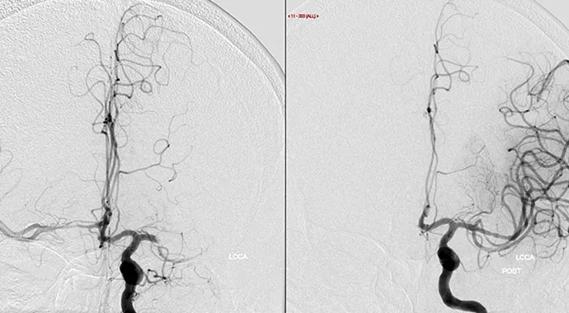AHA scientific statement offers best practices to improve care for high-risk populations
In 2022, the American Heart Association issued a scientific statement identifying best practices for evaluating and managing patients experiencing in-hospital stroke. Vascular neurologist Amre Nouh, MD, MBA, Regional Chair of Neurology at Cleveland Clinic Florida, was lead author of the statement.
Advertisement
Cleveland Clinic is a non-profit academic medical center. Advertising on our site helps support our mission. We do not endorse non-Cleveland Clinic products or services. Policy
“It outlines evidence-based best practices and proposes five core elements for optimizing management of in-hospital stroke,” says Dr. Nouh. “The sentinel effort around education and recognition of symptoms is the beginning of everything.”
In the latest episode of Cleveland Clinic’s Neuro Pathways podcast, Dr. Nouh discusses the scientific statement’s five recommended core elements and how they can be adopted into practice. He addresses, among other topics:
Click the podcast player above to listen to the 23-minute episode now, or read on for a short edited excerpt. Check out more Neuro Pathways episodes at clevelandclinic.org/neuropodcast or wherever you get your podcasts.
This activity has been approved for AMA PRA Category 1 Credit™. After listening to the podcast, you can claim your credit here.
Dr. Nouh: The first summary recommendation was recognition of symptoms and identifying your high-risk patient population. There are some key populations we found that tend to be high-risk. If you look at folks who undergo some form of vascular procedure — endovascular or open, either cerebrovascular or cardiovascular or vascular in general — they represent almost half of the population at risk. If you add in critically ill patients — those in the ICU — they together account for about two-thirds. These high-risk populations are where focusing education and resources will matter most.
Advertisement
Another aspect of the necessary education involves adopting a standard tool to identify stroke. We haven’t yet found any superior methods for use in hospital settings. All hospitals have different protocols, but nothing has been published as a head-to-head study to determine the best screening tools for nursing staff or other clinicians to use. Tools like the Cincinnati Prehospital Stroke Severity Scale, the BE-FAST mnemonic for stroke symptoms or a modified NIH Stroke Scale are reasonable. What’s needed is a standard process to identify whether someone is having changes, and then having some standard cadence in defining the right audience to educate.
The education doesn’t end there. There is also the activation process. What are the protocols for activating? What is the availability? Who are the key individuals who can do that, and what are the steps involved? I think education is one of the most important areas where we can really make a change and start controlling the narrative on identifying and recognizing stroke more effectively.
Advertisement
Advertisement

Tasked-based therapy improves social connection and quality of life

LAA closure may be compelling option in atrial fibrillation ablation patients at high risk of both stroke and bleeding

Case illustrates essentials of the low-risk, high-potential procedure when paired with rehab

New analyses confirm preservation of ablation outcomes, broaden data on bleeding benefits

Increasing treatment options are extending the window for continued functional gains

Study links large artery atherosclerosis and delayed presentation to poorer treatment results

$3.2 million grant will fund use of calcium-based imaging to record neuronal activity in ischemia model

Findings from large cohort analysis can guide ongoing quality improvement initiatives